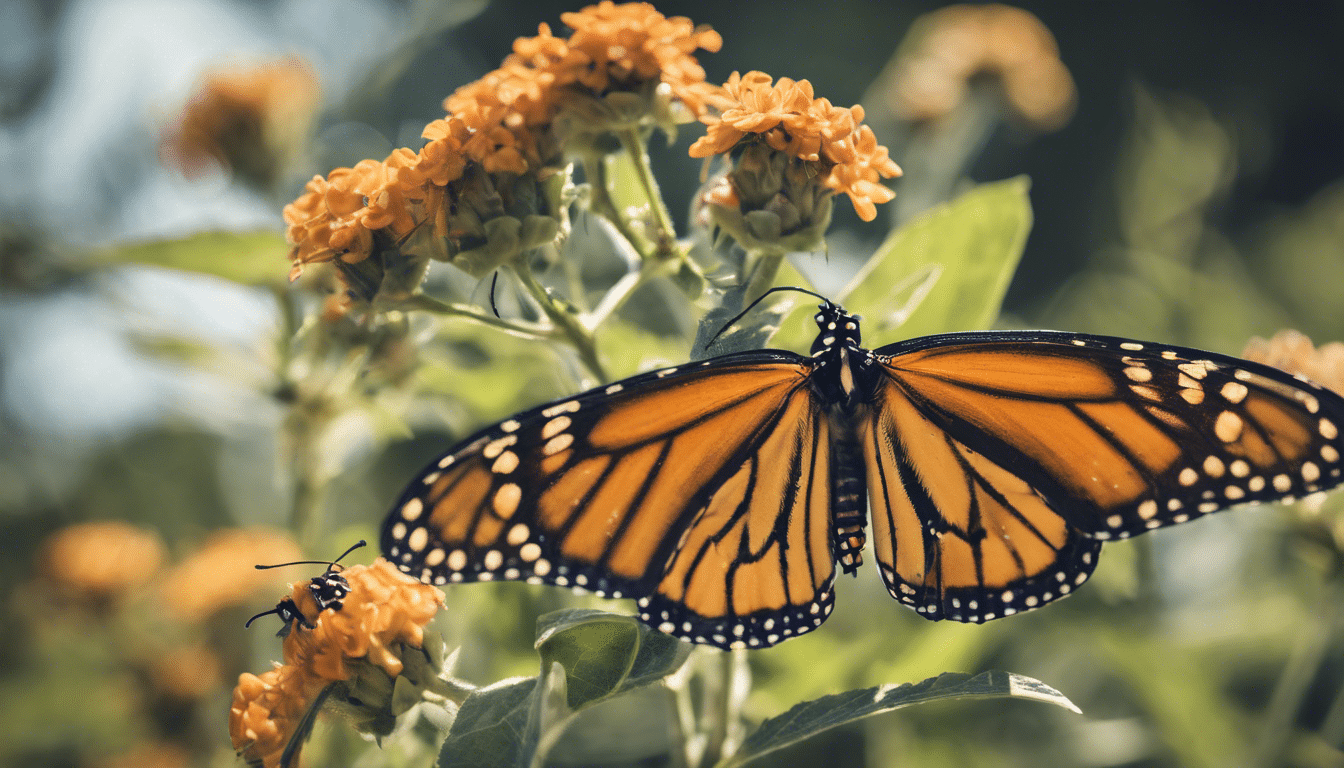Creating a haven for Monarch butterflies is not only a rewarding endeavor for nature enthusiasts but also a crucial step in preserving the biodiversity of our ecosystems. These majestic insects, known for their striking orange and black wings, rely on specific plants throughout their life cycle. By cultivating these essential flora, one can transform their yard into a nurturing sanctuary for Monarch butterflies.
The Keystone of Monarch Habitats: Milkweed

The cornerstone of any Monarch-friendly garden is milkweed. This plant serves as the exclusive food source for Monarch caterpillars and is vital for their survival. There are many varieties of milkweed, but it’s important to choose native species that are well-suited to your local climate and soil conditions. Native milkweeds not only provide the necessary nutrients for Monarchs but also have the right timing for the lifecycle of these butterflies, ensuring that the leaves are available when the caterpillars hatch.
Nectar-Rich Flowers: Fueling Migration
While milkweed is critical for caterpillars, adult Monarchs need nectar-rich flowers to fuel their long migrations. Planting a variety of flowering plants that bloom at different times ensures a consistent food source. Some excellent choices include coneflowers, blazing stars, and black-eyed Susans. These plants not only offer sustenance to adult butterflies but also add vibrant splashes of color to your garden.
Structural Diversity: Shelter and Resting Spots
A diverse landscape with varying levels of plant height and structure provides Monarchs with shelter from predators and harsh weather conditions. Incorporating shrubs and tall grasses can create safe resting spots for butterflies during their migration. Additionally, these structures can host other beneficial wildlife, contributing to an overall healthy ecosystem in your backyard.
Continuous Blooms: A Season-Long Sanctuary
To support Monarchs throughout their breeding season and migration, it’s essential to have plants that bloom from spring through fall. Early bloomers like wild lupine and late-season flowers such as goldenrod will ensure that your garden remains a reliable pit stop for these travelers. By planning your garden with continuous blooms in mind, you provide a lifeline to Monarchs as they journey across continents.
Avoiding Pesticides: The Organic Approach
One of the most significant threats to Monarchs—and indeed all pollinators—is the use of pesticides. To create a truly butterfly-friendly environment, it’s crucial to practice organic gardening methods. This means avoiding chemical pesticides and herbicides that can harm butterflies, caterpillars, and other beneficial insects. Instead, opt for natural pest control methods and embrace a more holistic approach to garden health.
Creating Microhabitats: Beyond the Butterfly Garden
Monarch butterflies benefit from microhabitats within larger gardens or yards. These small-scale environments can include features like water sources—such as shallow dishes filled with pebbles and water—and specific host plants grouped together to mimic the natural habitats where Monarchs thrive. By thinking beyond individual plants and considering the layout of your garden, you can create complex habitats that cater to the needs of these delicate insects at every stage of their life cycle.
Community Efforts: Joining Forces for Conservation
While individual efforts are valuable, joining community initiatives can amplify the impact on Monarch conservation. Participating in local gardening clubs or contributing to community gardens designed with pollinators in mind fosters a collective approach to wildlife preservation. By sharing knowledge and resources, communities can create interconnected habitats that support not only Monarchs but a wide range of pollinating species.
Incorporating these plant varieties and gardening practices into your yard will not only benefit the enchanting Monarch butterfly but also contribute to the health of your local ecosystem. As we strive to protect these creatures and their habitats, we enrich our own lives with the beauty and diversity of nature right in our backyards.
Content
- 1 The Keystone of Monarch Habitats: Milkweed
- 2 Nectar-Rich Flowers: Fueling Migration
- 3 Structural Diversity: Shelter and Resting Spots
- 4 Continuous Blooms: A Season-Long Sanctuary
- 5 Avoiding Pesticides: The Organic Approach
- 6 Creating Microhabitats: Beyond the Butterfly Garden
- 7 Community Efforts: Joining Forces for Conservation












